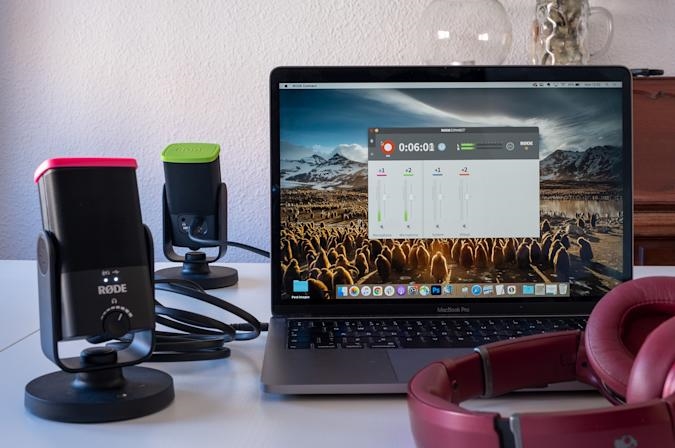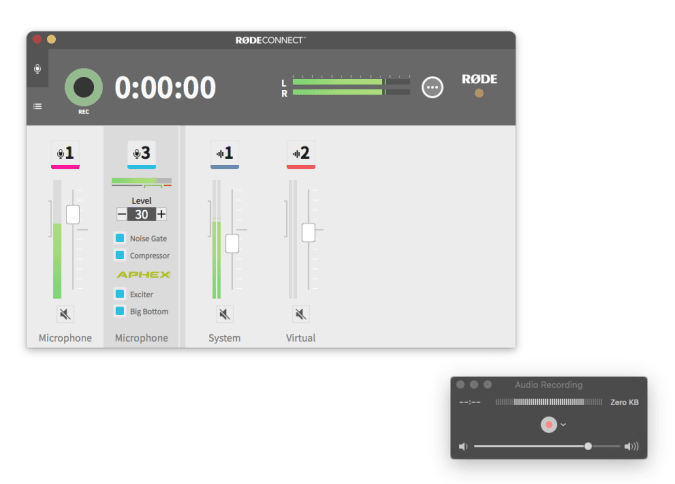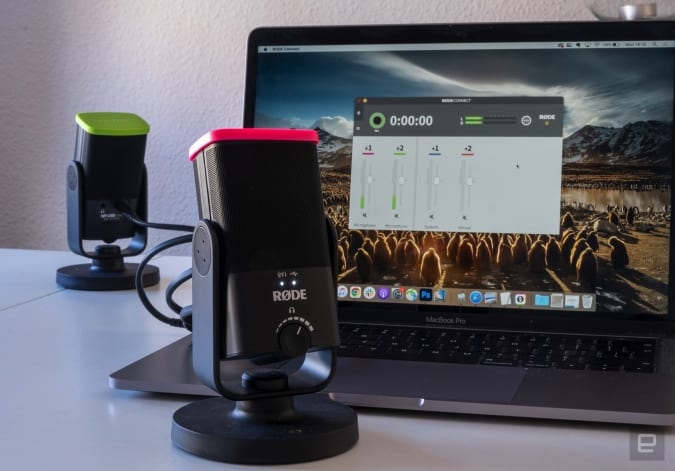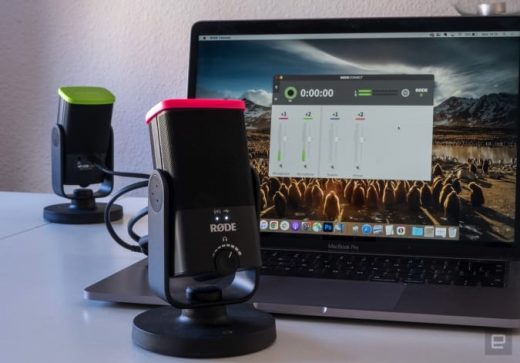Rode’s VideoMic Go II changed my opinion on what a shotgun mic can do
Rode Connect app simplifies recording multi-host podcasts on one PC
The “free” app solves a surprisingly common podcasting problem.


Rode has just unveiled Rode Connect, a new tool aimed squarely at the home podcaster. The new, free app, aims to simplify multi-microphone recording with just one computer and no external hardware. The flagship features include recording up to four USB microphones on the same PC, recording of system audio (jingles and music beds for example) along with a dedicated “virtual” channel for bringing in guests via Skype/Zoom and so on (and importantly they will hear all the music/jingles, too).
Rode Connect provides individual faders for all four local microphones so you can get the mix right as you record. All your system audio will be on one channel, so if you want a quiet music bed, but a loud sound effect, that won’t be possible, but it’s still a really useful feature. There’s only one “virtual” channel too, so you can likely have multiple remote guests, but again they will be recorded to the same channel. Or you could have one guest on the system channel and another on the virtual if you don’t need any other sounds at the same time.
Most importantly, Rode Connect solves a surprisingly common problem: using multiple USB microphones on one computer. For all the convenience of USB, you can’t really just plug two microphones into a computer and record away — whatever you’re recording with likely only lets you record from one USB mic at a time. With Rode Connect you can record up to four microphones in the same session effortlessly.
Previously, the simplest workaround was to have everyone record their own USB mic on their own laptop and then put all those files together in a digital audio workstation (DAW). Or, maybe you can get by simply using one microphone and taking turns? Not great though.

If you are technically minded there are some OS-level tricks to solve the multi-USB mic issue. On macOS the most common is to create an aggregated sound device. On Windows you’re going to get very familiar with ASIO drivers. But just typing that sounds like a lot of work. This is usually the point when you start looking for a hardware mixer (like the Rodecaster Pro).
Rode Connect simplifies all that, but there are some caveats. Well, one in particular and it’s a biggie. At launch, the software only works with Rode’s own NT-USB Mini microphone, so you’re going to need at least one of those for the app to be of much use. Rode has confirmed that more of its microphones will be compatible in the future, but it’s not clear if there are plans to open this up to “any” USB microphone further down the line.
This effectively means that, while free, there’s still some level of “buy-in” to use the app. You can jury rig a few things so that you can use other microphones. For example, I was able to use Quicktime’s audio recording option to pipe an XLR microphone into Rode Connect via the system audio. If you’re doing that it’s slightly going against the whole point of simplifying things, but nonetheless, it’s possible.
That said, as someone that has been using a Rodecaster Pro almost daily for the last year or so, Rode Connect has some distinct advantages. For one, I don’t need to turn on another piece of hardware if I want to record myself and a guest (be that locally or over a Zoom call). I use the Rodecaster most often for recording both sides of a call or interview, which is now something I can do directly on my Mac (this is something that’s much easier on a Windows PC).
The advantage here is that the Rodecaster takes an age to export audio in multitrack mode and you’ll end up with eight separate files (one for each channel on the mixer) along with a stereo mix. Even if you just import the stereo mix it’s a little more work than doing it within your operating system. Rode Connect offers multitrack export or simple stereo export and it seems quicker at both in my testing than with the Rodecaster.
Rode Connect almost feels like an attempt at a software-only version of the Rodecaster Pro. If you’ve used the latter, the UI of Connect will ring a few bells, despite it being pretty sparse. There are channel faders for each connected NT-USB Mini along with one each for system audio and “virtual” guests. The channel number icon is reminiscent of the physical channel buttons on the Rodecaster Pro. Click those buttons in Rode Connect (on one of the USB mics) and you’ll find some of the same audio enhancement options: Noise Gate, Compressor, Exciter and Big Bottom. These features rely on a previously unused digital signal processor (DSP) found in the NT-USB Mini, another reason why it’s limited to this microphone at this time.

The fun starts when you hit record, obviously. I was able to chat with a colleague via Slack’s call option and record both sides of the conversation by pointing Slack’s audio output to Rode Connect’s Virtual channel. When I played some music via YouTube, we both heard it and I could lower the volume to a level where it worked as a music bed. I could even play local audio files triggered from a Stream Deck, meaning most of the trimmings you might need for a well-rounded podcast are possible. Naturally, it all gets recorded down into either separate multitrack files — if you want to then edit and polish it later in a DAW — or simply export it as one single file to share directly to your platform of choice.
It’s important to note here that there’s an inherent problem when recording any podcast with multiple speakers in the same room: Crosstalk. In my testing, I was able to hear a second speaker on my mic’s recording which in the stereo mix made my mic sound more echoey. This is easily fixed in multitrack mode, as you can simply delete all the other audio channels, leaving just the main speaker. But it does mean you’ll need to consider mic placement and room acoustics if you plan on using just the stereo mix. Fortunately, you get a nice long USB cable with the NT-USB Mini.
If you’re wondering about headphones for all the host and guests, then this is where Rode limiting the app to one of their own mics (for now) might make sense. The NT-USB Mini has a headphone port for direct monitoring, but when used with the app all the local guests will hear any audio that passes through the app. Again, this means music beds, jingles and guests are heard by all. This also neatly solves the need for a headphone splitter or even cable spaghetti around the PC.
If streaming is your thing, or if you want it to be, Rode Connect also offers a dedicated output channel so you can easily pipe the entire mix through to something like OBS or Xsplit.
Alongside the release of Rode Connect is a smaller, cuter companion accessory: Colors. This really is just a set of colored caps for the NT-USB Mini so that you can mute or change the volume of the right microphone with a quick visual reference. There are four plastic caps that tally with the four-channel icon colors in the app. It’s not an essential purchase but will certainly make it easier for the host to stay on top of who’s talking and make sure they have their levels right.
(37)


